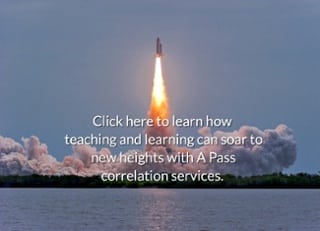Physics class can be a lot of fun! It doesn’t get much better than rockets, amusement parks, and roller coasters. In order to write a good physics course, make sure you address some common misconceptions with direct instruction and fun activities like those shown here!
- Weight is the SAME as Mass
As science content writers, we know that weight is NOT the same as mass and our teachers know this too. Yet often a teacher will take the time to explain the difference between weight and mass, only to use the two interchangeably when measuring during labs. If students aren’t giving the teacher their full attention during the weight versus mass lesson, then their misconception can persist. To fully understand the difference between mass and weight, content writers must include a lesson with the definition of each and a reinforcing activity.
Mass is a quantitative term that describes the amount of matter in an object. It is a measure of the object’s inertia, or its resistance to change in velocity. Weight includes the effects of gravity on the object. This is best shown by the equation W=mg, where w = weight, m = mass, and g= gravity. Looking to learn more? Try visiting Hyperphysics Mass and Weight.
Gravity is the FORCE of attraction between two masses. When one of the objects is relatively large, gravity is more obvious. For example, the effect of gravity on our bodies is stronger on Earth than on the Moon. This is because the Moon is about six times smaller than Earth so our weight is about six times lower than on Earth. You can prove this relationship using W=mg and including fun activities like Your Weight on Other Worlds and Detective Science Games Gravity, Mass and Weight.
- Rockets Move by PUSHING on Matter Behind Them
This is a great time to teach the Law of Conservation of Matter: For every action, there is an equal and opposite reaction. If your students understand this law, then they’ll learn that rockets don’t PUSH on matter behind them; instead they move in the OPPOSITE direction. Rockets carry fuel that is made up of particles of matter. As this fuel is ignited, gases are released behind the rocket. Since the gases move backward, the rocket moves forward.
What physics courses should include the law of conservation of momentum? You can begin as early as middle school! This misunderstanding has come up in my classes when building bottle rockets and teaching Newton’s Laws of Motion. The thought process is as follows: When students learn about sound, typically they’re taught that sound does not travel through the vacuum of space.
In my experience, some savvy students will then ask the question “If there’s no matter or molecules in space, what does a rocket push off of to move?” Without further instruction, they may jump to the conclusion that it pushes off the gases expanding behind them. Please correct this misconception by using activities like NASA Rocket Principles. Teaching AP Physics or college? Include in your course materials background information like this one on rocket propulsion.

- Acceleration Moves Forward and Deceleration Slows Down
Students tend to think of acceleration as a change in speed moving in one direction, forward. Where does this misconception come from? Mostly from a person’s experience in a car. You may reason that if braking is acting in the opposite direction of motion, then acceleration must be in the opposite direction. In fact, acceleration is always in the direction of the net force, which may or may not be in the direction of movement.
A simple way to avoid misconceptions is to clearly define acceleration as “the rate of change of velocity of an object with respect to time.” Point out that velocity includes DIRECTION as well as speed. Therefore, acceleration can be due to ANY change in direction, including what we may call deceleration or slowing down. Ask a physicist, and they’ll tell you that using the word deceleration is imprecise and meaningless in physics. Instead use negative acceleration.
Need to prove to your teachers and students that there is no acceleration in physics? Refer them to Newton’s second Law, F= ma (where F = force, m = mass, and a = acceleration). Reinforce mathematical examples with fun activities. Try Amusement Park Physics, Phet Roller Coaster Physics Simulation, and the many activities associated with The Moving Man.
- Force is Work and Power; Centrifugal Force Pushes Us to the Opposite Side of Turning Cars
The concept of force is often a confusing one for physics students. Often they make the mistake of thinking force is the same as work and power. Yet force is a vector quantity (meaning it includes direction), work is a scalar quality (meaning it does not include direction), and power describes the time rate of doing work. Learn more and teach your students the difference between the three with an activity in UCLA’s Force, Work and Power.
Another misconception relates to centrifugal force. Centrifugal force is the net radial component of other forces (contact forces, gravitational forces) acting on an object. Yet it is not centrifugal force that pushes you against a car door when the car goes around a curve. In fact, this is not a force at all—it’s inertia! Inertia is the tendency to NOT move OR to continue to move unless a force acts against the object. Learn more about centrifugal force with videos and activities at The Physics Classroom: Forbidden F Word and Roller Coaster and Amusement Park Physics.

When writing your physics course, don’t forget to address the four misconceptions presented here. Provide activities to help students understand that 1) weight is NOT the same as mass, 2) rockets do NOT “push” off of matter behind them, 3) acceleration is in ANY direction and deceleration isn’t used in physics, and 4) force is different from work and power and centrifugal “force” is not a force at all, but inertia!




